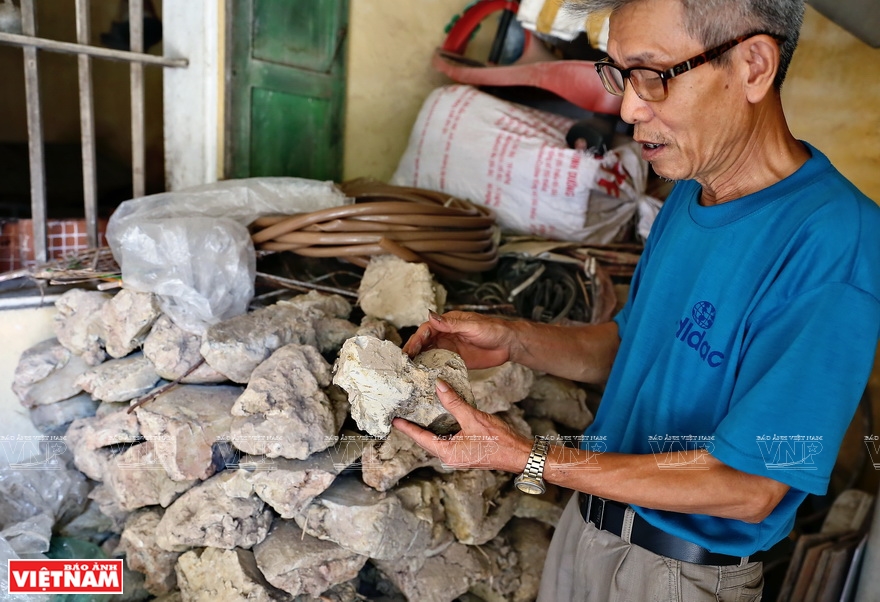
The clay must be dug at a depth of 2.5 meters to have the required smoothness and cleanliness. Photo: Khanh Long
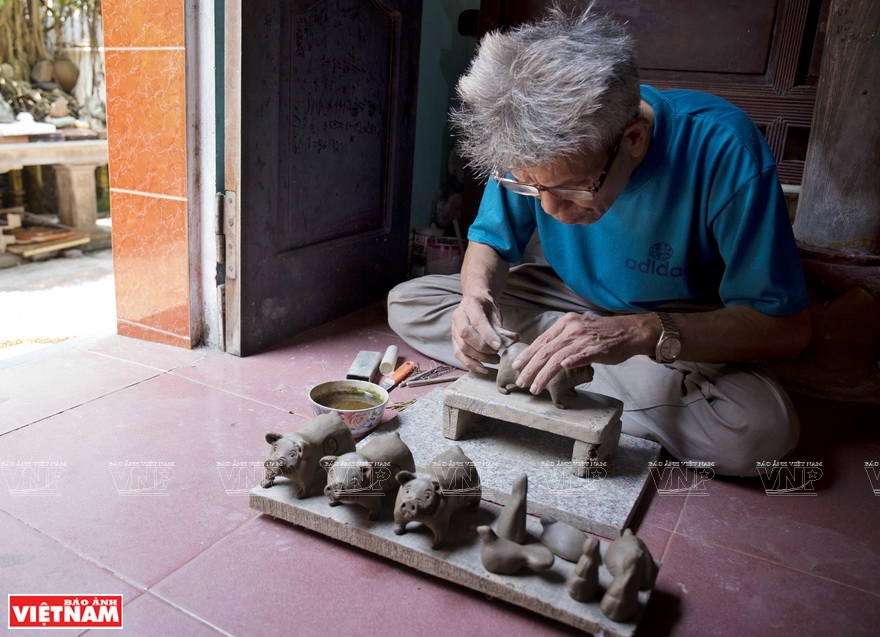
Shaping the statue is done by hand. Photo: Khanh Long
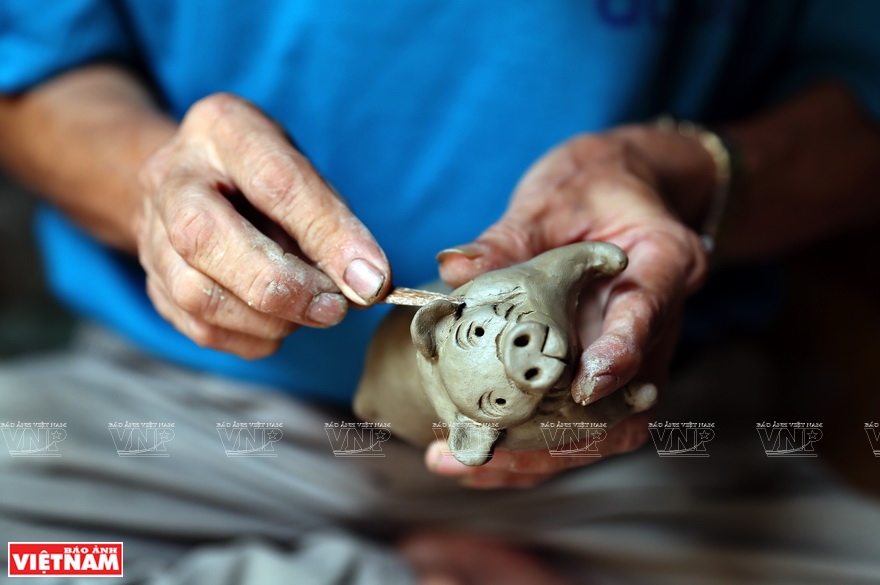
A sharp end bamboo stick is used to shape the details of the statue. Photo: Cong Dat
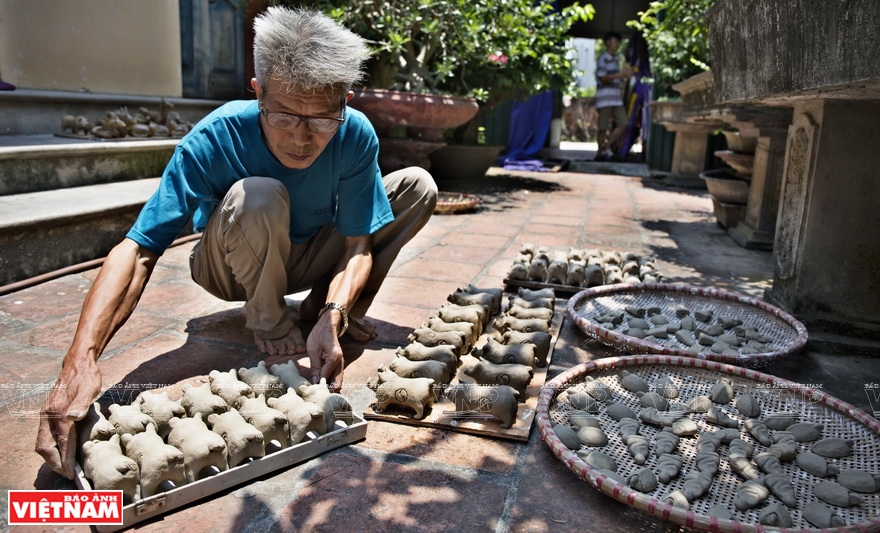
After shaping, the statues are sundried for at least six days. Photo: Khanh Long
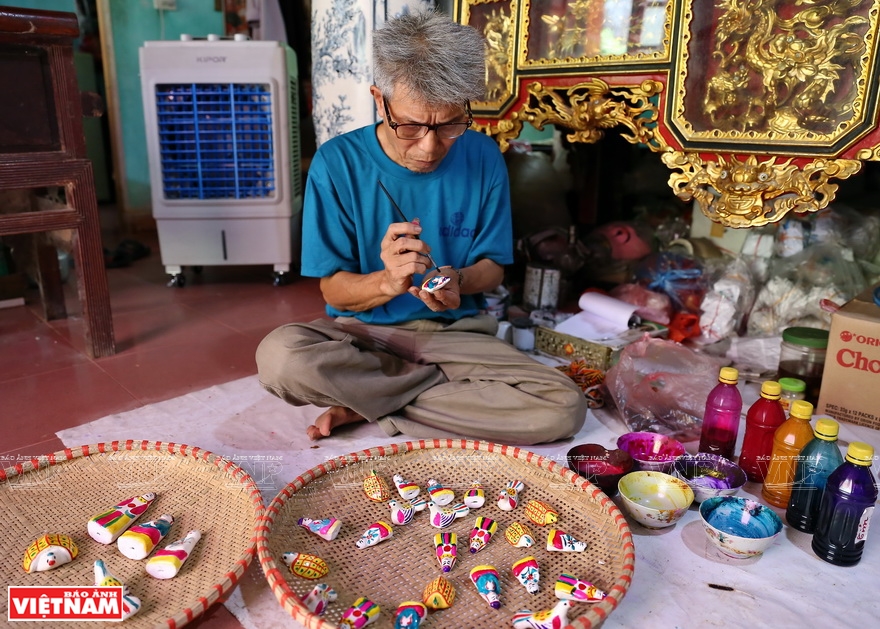
The basic colors of the clay statues are white, yellow, blue, red and black. Photo: Cong Dat

A set of traditional clay statues. Photo: Khanh Long |